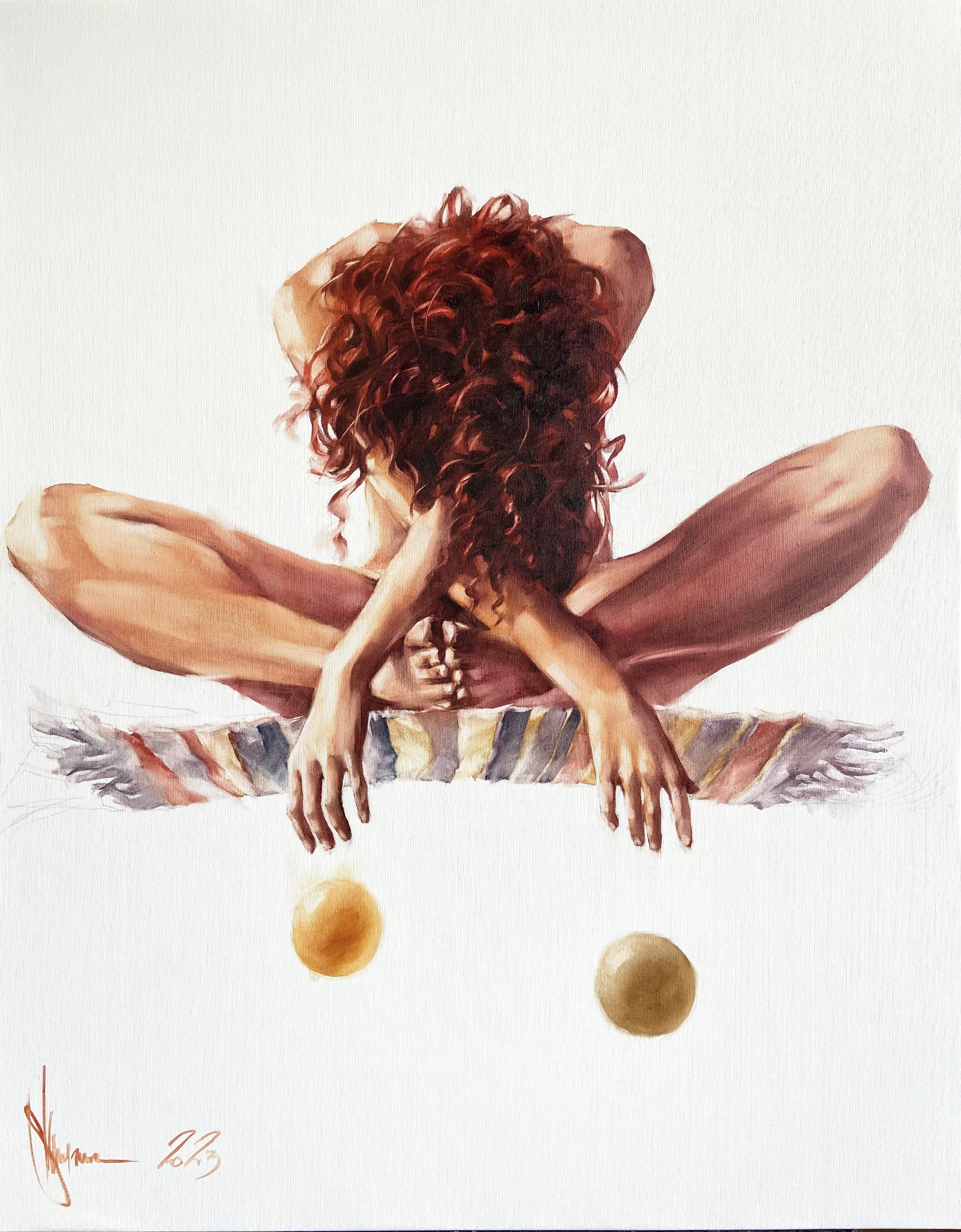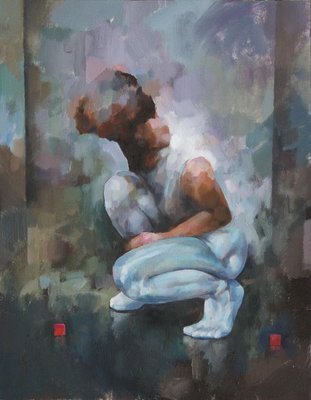The Evolution of Figurative Oil Paint: Comprehending Its Historic Importance and Modern Interpretations
The advancement of figurative oil paint offers as a compelling lens with which to examine the interplay in between creative expression and historic context. Contemporary artists, drawing from this abundant heritage, are now reinterpreting the human number in means that challenge conventional stories.
Origins of Metaphorical Oil Painting
The origins of metaphorical oil painting can be traced back to the very early Renaissance in Europe, particularly in the 15th century. This duration marked a substantial departure from the level depictions and rigid types characteristic of middle ages art. Musicians began to check out naturalism, stressing the human number and its emotional expression. The advancement of oil paint enabled greater depth of color and information, boosting the realism and vibrancy of their work.

In this transformative age, figures were typically shown within contextually abundant atmospheres, showcasing not only their physical attributes yet likewise their mental states. Pioneers such as Jan van Eyck and Titian used the medium's versatility, utilizing layering methods to accomplish luminosity and structure. This innovation promoted the representation of elaborate fabrics and the nuances of skin tones, adding to the growth of portrait and narrative scenes.
In Addition, the Renaissance emphasis on humanism fostered an appreciation for uniqueness, which consequently affected musicians to create even more dynamic and relatable numbers - figurative oil painting. Because of this, metaphorical oil painting became a powerful lorry for storytelling and psychological interaction, preparing for future creative motions and designs
Key Historic Movements
Substantial historical motions have shaped the advancement of figurative oil paint, each adding unique approaches and methods that broadened the tool's possibilities. The Renaissance marked a turning point, highlighting realism and the human type, with musicians like Leonardo da Vinci and Michelangelo pushing the limits of physiological accuracy and point of view. Following this, the Baroque period brought dramatic contrasts of light and darkness, exhibited by Caravaggio, who infused spiritual motifs with intense emotionality.
The 19th century introduced Romanticism and Realistic look, where artists such as Delacroix and Courbet challenged timeless ideals, concentrating on private expression and day-to-day life. The introduction of Impressionism additionally revolutionized the medium by highlighting the results of light and shade, resulting in a departure from typical depiction.
In the early 20th century, movements like Expressionism and Cubism redefined figurative painting with abstraction and the expedition of psychological deepness. Each of these movements not only showed the social adjustments of their times yet also prepared for contemporary interpretations. The interplay between these historical motions has actually produced an abundant tapestry of designs and ideologies, affecting modern-day musicians in their search of recording the human experience on canvas.
Strategies and Products Advancement

Throughout the Baroque period, strategies such as chiaroscuro and sfumato emerged, boosting the psychological resonance of metaphorical structures. Musicians began to experiment with lusters and impasto, controling structure and luminosity. By the 19th century, advancements like the use of pre-mixed paints in tubes reinvented ease of access, permitting artists to repaint en plein air and capture the short lived results of light.
The 20th century saw the intro of synthetic pigments and mediums, which increased the palette and modified the uniformity of oil paints. The expedition of brand-new application techniques, such description as combination blades and brushes of differing rigidity, further diversified imaginative expression. Collectively, these innovations mirror find the progressing partnership between materials, strategies, and the imaginative vision fundamental in figurative oil paint.

Contemporary Interpretations
Contemporary interpretations of figurative oil painting reflect a dynamic dialogue between tradition and innovation, where artists challenge established norms and explore diverse themes. This evolution shows up in numerous means, as modern musicians blend classic techniques with modern concepts, often dealing with social, political, and personal stories.
Several experts attract motivation from historical jobs, yet they instill their pieces with contemporary perspectives, making use of the human type as an automobile for commentary on identity, sex, and society. Artists progressively experiment with abstraction, distortion, and combined media, which enables a wider interpretation of the number and its context.
Furthermore, using dazzling color palettes and unique structures frequently offers to disrupt typical checking out experiences, provoking essential interaction from audiences. This change in focus prolongs beyond aesthetics; it mirrors a growing recognition of the complexities of human experience in an interconnected globe.
As figurative oil paint remains to progress, it remains an essential medium for discovering the nuances of contemporary life, personifying both a respect for heritage and a dedication Visit Website to progressive thought. The outcome is a rich tapestry of expression that reverberates with the intricacies of the contemporary human problem.
Influence On Modern Art
The impact of figurative oil painting on contemporary art is extensive, as it has actually constantly influenced a myriad of artistic motions and techniques throughout the 21st and 20th centuries. From Expressionism to Surrealism and beyond, the exploration of the human figure has stayed a main motif, permitting musicians to convey complex emotions and narratives. This emphasis on figurative depiction has actually brought about a re-examination of typical techniques, resulting in innovative methods that blend realism with abstraction.
Furthermore, contemporary artists have accepted figurative oil painting as a way to address social and political concerns, utilizing the medium to challenge perceptions of identification, sex, and society. The resurgence of passion in metaphorical job in recent years reflects a yearning for connection in an increasingly electronic globe, where human experience and emotion are critical.
Additionally, the discussion in between figurative oil painting and modern-day art is noticeable in the jobs of artists such as Kehinde Wiley and Jenny Saville, that attract on historical references while instilling their pieces with modern significance. Ultimately, metaphorical oil paint continues to form and redefine contemporary artistic expression, emphasizing its long-lasting importance in the art globe.
Final Thought
The development of figurative oil paint underscores its historic value and adaptability throughout various imaginative motions. From the naturalism of the Renaissance to the emotive expressions of the Baroque and the cutting-edge methods of modernity, this tool has continually changed. Contemporary interpretations show dynamic shades and non-traditional compositions, cultivating vital engagement with political and social themes. Eventually, metaphorical oil painting continues to be an important tool for exploring the human experience, reverberating exceptionally in today's electronic landscape.
The development of metaphorical oil paint serves as a compelling lens with which to check out the interplay between imaginative expression and historic context.Significant historic activities have shaped the evolution of figurative oil paint, each contributing distinct approaches and methods that expanded the medium's possibilities.As historical movements formed the trajectory of figurative oil painting, the strategies and products used by musicians have actually additionally undertaken significant changes. figurative oil painting.The effect of figurative oil painting on modern art is profound, as it has constantly inspired a myriad of creative motions and methods throughout the 21st and 20th centuries.The development of figurative oil painting underscores its historical significance and adaptability throughout numerous imaginative activities